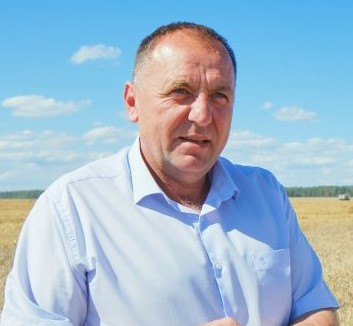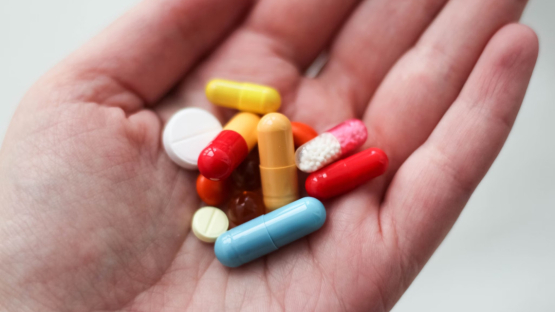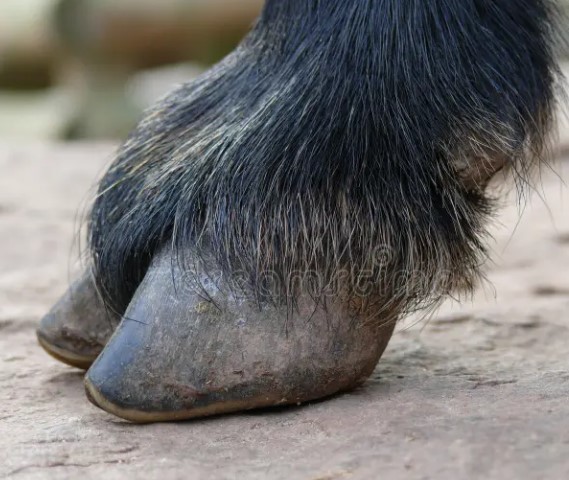Experiment on drying corn: what the Ministry of Agriculture and Food and Scientists say about the prospects

Drying grain with special preparations was used in Belarus to optimize the harvesting of various crops. But this technology has not previously been widely used for corn. Therefore, it was decided to conduct an experiment on drying plants of this crop, to begin with, at one farm - the Pyatigorye branch of OJSC Agrokombinat Dzerzhinsky. The main goal is to create the best conditions for harvesting corn for grain without losses and increasing the productivity of combines. BELTA correspondent learned how effective this experience was.
How the experiment is carried outAs Nikolai Leshik, HEAD of the main department of plant production of the Ministry of Agriculture and Food, explained, preparations (so-called desiccants) contribute to the desiccation of standing plants. This helps harvest grain more efficiently. “If the plant is not treated with drugs, the process of drying out the cob is slower. And if it is treated, there is more intense evaporation of moisture and drying of the grain, exfoliation of the integumentary part of the cob,” he noted. Thanks to this, the productivity of the combine in the field increases and losses during threshing of cobs are reduced.
As Elena Yakimovich, deputy DIRECTOR for scientific work at the Institute of Plant Protection of the National Academy of Sciences, noted, drying is important for corn crops, since this crop has a large green mass and has a tall stem. “Today, one drug has been registered in the state register, which is officially approved for use in corn crops. It consists of ammonium glufosinate. There are two more relevant active ingredients, but their effectiveness needs to be proven. This is what this production experience is dedicated to. It started on September 12th on behalf of the Ministry of Agriculture and Food, we are studying three active ingredients in total,” she said.
It is planned to conduct four production accountings. "The first count was carried out before the start of the experiment, we measured the moisture content of the corn grain. Before treatment, the grain moisture was more than 53%. Today, on the seventh day of the experiment, we carried out the second count. If in the control untreated area the moisture content remained more than 53%, then in the treated areas it is already 46-49%. This is a significant reduction. The next count will be carried out on Friday, and the last tests should be performed 14 days after the drug is administered - this is next Tuesday. I think that by the end of next week a scientific report on the results will be prepared conducted research," Elena Yakimovich informed.
First resultsThe effectiveness of the experiment was assessed today by the Minister of Agriculture and Food Sergei Bartosh. “The efficiency is remarkable, the savings are significant. Of course, plant protection products have their cost, but other costs are reduced, the load on equipment is reduced. This technology also contributes to earlier harvesting of corn. So there are prospects, but before expanding the use of this technology, it is necessary "Together with scientists, we study and refine everything. It is necessary to register plant protection products that can be used. So far, only one drug has been registered. And for this, they first need to be tested, which is what we are doing," the minister noted.
He also instructed to practice the use of drones. "There are areas where the heights are different: where lower - the corn is greener, where higher - it has dried out. Using a drone, you can determine and process the required area. But this is all in the future. With drones, you need to work out a number of points - coverage width, height, speed winds also need to be taken into account,” Sergei Bartosh noted.
Nikolai Leshik, in turn, noted that the technology is very convenient from a management point of view. “In this way, an agronomist can regulate certain aspects, for example, accelerate ripening. Using this technology, it is possible to systematically determine the timing of harvesting existing corn crops for grain, plan the use of harvesting equipment, equipment for transporting and processing grain with the least load,” he added.
What they say on the farm itselfAt the Pyatigorye branch of the Dzerzhinsky Agricultural Plant OJSC, they have been working on corn for a long time. The average grain milled on the farm is about 12 thousand tons. The director of the branch, Petr Yarizhenets, spoke about the advantages of the experiment for the farm. “They started harvesting corn earlier, which saves money on electricity and on gas. And at the same time, we are loading the drying facility - after harvesting the grain crops, we immediately begin to dry corn grain, as well as sunflower,” he noted.
“We also save money on the careful operation of equipment and increasing threshing. If you do not dry the corn, then the combine threshes on average 120-140 tons per day, and if the corn is dried - 180-200 tons. And one more plus - we get cheaper feed, which We use it for animal feed, in particular for MILK production,” he emphasized.
What will happen nextThe farm is interested in further use of the technology. It is too early to talk about its wider use - the experiment has not yet been completed. “However, farms that want to work using this technology can individually contact the ministry and obtain permission to process individual areas of corn for grain,” added Sergei Bartosh. The head of the Ministry of Agriculture and Food also emphasized that he sees good prospects for this area.
Valeria GAVRILOVA,
BELTA.
Read together with it:
- Восстановление производства свинины в России: оптимистичные прогнозы до конца 2026 годаОб этом сообщила министр сельского хозяйства России Оксана Лут на заседании комитета по аграрным вопросам в Госдуме. В настоящее время организованный сектор уже показал положительную динамику, несмотря на резкое снижение объемов в Курской и Белгородской областях. Чтобы поддержать восстановление, правительство ввело новые льготные кредитования, и уже более половины заявленных кредитов направлены на...
- Uruguay strengthens sanitary controls to protect meat export chain to ChinaUruguay has announced stricter controls and sampling at its MEAT processing plants after traces of tick-killing medication were found in a shipment of beef returning from CHINA . The measure aims to protect traceability, HEALTH reputation and logistical continuity of trade flows, which account for more than 6......
- Omsk Bacon Meat Processing Plant Launches New Equipment to Increase Production EfficiencyPlant DIRECTOR Denis Nalepov noted that the new equipment significantly optimizes production processes and will help meet the planned increase in production volumes. This year, Omsky Bacon will also launch the second phase of the Chunaevsky-2 pig farm, which will increase pork production by 58%. Meanwhile, preparations are underway for the MEAT processing plant's capacity as part of an investment ...
- Personal responsibility, modernization. What measures is the Ministry of Agriculture and Food taking to reduce mortality?October 27, MINSK . To reduce cattle mortality, the Ministry of Agriculture and Food is focusing on disease prevention, infrastructure modernization, and increased accountability at all levels of government. Ivan Smilgin, Deputy Minister of Agriculture and Food and DIRECTOR of the Department of Veterinary and Food Surveillance, spoke to a BELTA correspondent about which measures are producing tang...
- Отсутствие ремней безопасности, проезд не по своей полосе. На что обращает внимание ГАИ при проверке маршруток25 октября, Минск. Непристегнутые пассажиры, отсутствие ремней безопасности, трещины на лобовом стекле - это лишь малая часть нарушений, которые ежедневно выявляют инспекторы ГАИ, проверяя маршрутки. Несоблюдение элементарных правил может привести к страшной трагедии. Одна из них недавно случилась под Светлогорском, где погибли шесть человек. Корреспондент "7 дней" отправился в профилактический ре...
- Министерство сельского хозяйства США представило план по снижению цен на говядинуПоголовье скота в стране находится на самом низком уровне за последние 75 лет, в то время как спрос на говядину вырос на 9% за последнее десятилетие. Поскольку увеличение поголовья скота в стране требует времени, Министерство сельского хозяйства США (USDA) уже сейчас инвестирует средства, чтобы сделать эти рынки менее волатильными для скотоводов в долгосрочной перспективе и более доступными для по...
- Производство яиц растёт в Липецкой областиЗа девять месяцев 2025 года в хозяйствах всех категорий региона получено 702,4 млн яиц. Это на 8 % больше, чем за аналогичный период прошлого года. Основным производителем и поставщиком пищевого куриного яйца в Липецкой области является сельхозпредприятие, две площадки которого расположены в Липецком округе и Грязинском районе. В день там получают порядка 1,6 млн штук яиц. За три квартала текущего...
- Более 100 центнеров кукурузы с одного гектара собирают липецкие аграрииНамолочены первые 100 тысяч тонн. Уборка кукурузы на зерно идет в 15 районах и округах. Это последняя из зерновых и зернобобовых культур, которую предстоит обмолотить липецким аграриям. В этом году под «царицу полей» отведено около 74 тысяч гектаров. На 20 октября текущего года с 12 тыс. гектаров собрано 125 тысяч тонн кукурузы при средней урожайности – 1......






























































